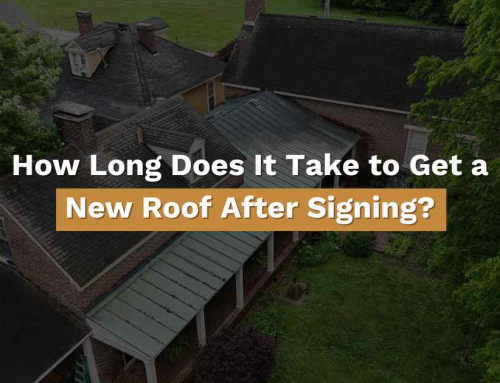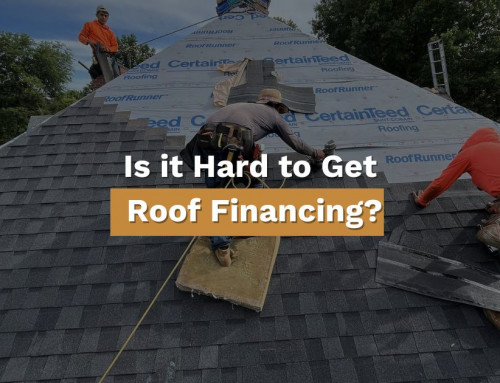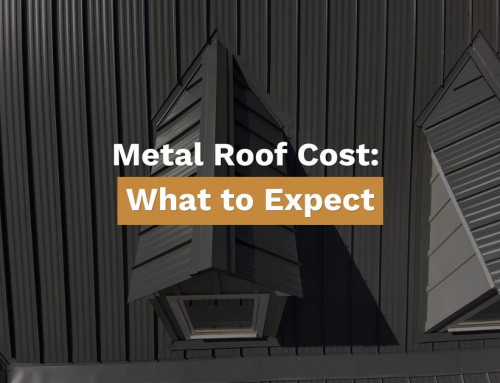
Key Takeaways
Deciding between large and full roof repairs depends on the commercial roof replacement cost, disruption, and the roof’s condition. Large repairs are cheaper upfront, extend the roof’s lifespan, and minimize disruption, making them ideal for newer roofs with localized damage. However, a full replacement is a long-term investment that improves energy efficiency, increases property value, and comes with comprehensive warranties. It also addresses underlying issues like water damage that repairs might miss. If your roof is nearing the end of its lifespan or has widespread damage, replacement may be the better option.
Commercial Roof Repair: Large Repairs vs Full Roof Replacement
Commercial roofs are designed for durability and protection, typically found on offices, warehouses, restaurants, and retail spaces. These roofs are built to endure a range of weather conditions and handle the unique wear and tear associated with commercial use. Understanding the different types of commercial roof constructions and materials is critical for property managers and owners to make informed decisions about repair and replacement. Commercial flat roofs, often made from materials like EPDM and TPO, offer advantages such as ease of installation, durability, and energy efficiency.
When maintaining a commercial roof system, deciding between large repairs or a full roof replacement is crucial for long-term property protection. Each option comes with its pros and cons, depending on the roof’s condition, age, and the extent of the damage.
Understanding Commercial Roofing Options
When it comes to commercial roofing, there are several options to consider. Each type of roofing material has its own unique benefits and drawbacks, and the right choice for your business will depend on a variety of factors, including your budget, the size and shape of your roof, and the local climate.
Here are some of the most common types of commercial roofing options:
Single-Ply Roofing:
This type of roofing is made from a single layer of material, such as EPDM or TPO, and is known for its durability and ease of installation. Single-ply roofing is particularly effective for flat and low-slope roofs, offering flexibility and UV resistance.
Modified Bitumen Roofing:
Made from a combination of asphalt and other materials, modified bitumen roofing is celebrated for its flexibility and resistance to weathering. It is ideal for low-slope roofs and provides extra protection through its multi-layer application.
Built-Up Roofing (BUR):
Comprising multiple layers of material, such as asphalt and gravel, BUR systems are renowned for their durability and weather resistance. They are a long-lasting option, especially suitable for harsh weather conditions.
Metal Roofing:
Constructed from metal sheets or tiles, metal roofing is known for its exceptional durability and resistance to weathering. It is a long-lasting option that also offers fire resistance and energy efficiency, making it ideal for buildings that require both strength and aesthetic appeal.
Asphalt Shingles:
Commonly used for steep-slope commercial roofs, asphalt shingles are affordable and easy to install. They come in various styles and provide solid protection, with a lifespan that can extend for decades with proper maintenance.
Types of Commercial Roof Constructions
Commercial roofs can be constructed in a variety of ways, depending on the type of building and the local climate. Here are some of the most common types of commercial roof constructions:
Flat Roofs: These roofs are prevalent in commercial buildings due to their ease of installation and maintenance. Flat roofs are practical for large surface areas and can accommodate HVAC systems and other equipment.
Low-Slope Roofs: Featuring a slight slope to facilitate water runoff, low-slope roofs are known for their durability and resistance to weathering. They are a common choice for buildings, providing a balance between functionality and cost-effectiveness.
Steep-Slope Roofs: With a more pronounced slope, steep-slope roofs offer aesthetic appeal and enhanced durability. They are often used in commercial buildings where visual impact and long-term performance are priorities.
The Case for Large Roof Repairs
-
Cost Savings in the Short Term
Large roof repairs offer immediate cost savings by targeting specific areas without needing extensive materials or labor. The cost savings can be calculated per square foot, which is beneficial for budgeting purposes. If your roof is relatively new or the damage is isolated, repairing sections can extend its lifespan without the high expense of a complete replacement.
-
Minimizing Disruption
For businesses, ongoing operations are a priority. Large repairs are typically less invasive, allowing businesses to stay open without needing to vacate or halt activities. This makes it easier to address roofing issues without severely impacting daily functions.
-
Extending the Roof’s Lifespan
If your roof’s underlying structure is intact, large repairs can delay the need for a full replacement by several years. Fixing damaged areas, sealing leaks, and addressing structural concerns can be a practical way to prolong the roof’s lifespan and give owners time to budget for future investments.
-
Environmental Impact
Repairs are often more eco-friendly than replacements. By fixing damaged sections and reusing much of the existing roofing material, the project reduces waste and prevents a large amount of debris from ending up in landfills.
Roof Re-Covering and Coating Options
In some cases, it may not be necessary to replace an entire commercial roof. Instead, a roof re-covering or coating may be a more cost-effective option. Here are some of the benefits and drawbacks of these options:
Roof Re-Covering: This process involves installing a new layer of roofing material over the existing roof. It can be a cost-effective way to extend the life of a roof without the need for a full replacement. Re-covering is suitable when the roof is still in relatively good condition but requires additional protection.
Roof Coating: Applying a layer of coating to the existing roof can protect it from weathering and extend its lifespan. Roof coatings are a cost-effective solution that can improve the roof’s performance and energy efficiency. They are particularly useful for addressing minor issues and enhancing the roof’s durability.
The Case for Full Roof Replacement
- Long-Term Investment
Though costly upfront, a full roof replacement is a smarter long-term investment, especially for older roofs with widespread issues. It eliminates the need for recurring repairs and ensures your building is fully protected for decades, reducing future maintenance costs.
-
Improved Energy Efficiency
A full replacement offers the opportunity to upgrade to modern, energy-efficient roofing materials. By improving insulation and using reflective surfaces, you can reduce heating and cooling costs, which is especially beneficial for large commercial buildings. Additionally, commercial roof installation provides significant benefits in terms of aesthetics, protection, and return on investment.
-
Enhanced Property Value
Replacing your roof boosts your property’s value and appeal. For businesses looking to sell or lease, a new roof signals good maintenance and reduces future concerns for buyers or tenants, making it a strong selling point.
-
Warranty Benefits
New commercial roofs come with robust warranties (often lasting 20-30 years), which cover both materials and labor. This provides peace of mind, ensuring future repairs won’t be an unexpected expense. In contrast, large repairs usually come with limited warranties, leaving you responsible for additional costs if problems persist.
-
Addressing Underlying Issues
Full replacements allow for a complete inspection and resolution of underlying problems, such as water damage, mold, or weakened decking. Large repairs might overlook these hidden issues, which can worsen over time and lead to more costly repairs down the road.
Weighing the Consequences
When deciding between large roof repairs or a full roof replacement, consider both immediate and long-term factors. If your roof is newer and the damage is localized, repairs may be the most cost-effective solution. However, if the roof has extensive damage or is nearing the end of its lifespan, a full replacement is a better investment, offering long-term savings, enhanced property value, and fewer future headaches.
Consulting with a trusted roofing contractor is essential to assess the roof’s condition and determine the best course of action. Whether opting for repairs or a full replacement, making an informed decision ensures your commercial property remains protected and valuable for years to come.
Commercial Roofing Materials
Choosing the right material for your commercial roof is crucial for its durability and performance. Your material selection should consider climate, building type, and budget, as different materials offer varying levels of protection and cost. It’s essential to select a suitable roofing system based on these factors to ensure optimal performance and longevity.
Popular Commercial Roofing Materials
- Single-Ply Roofing (TPO, EPDM):
Known for flexibility and UV resistance, these are great options for flat and low-slope roofs. Single-ply membranes are cost-effective, durable, and easy to install.
- Modified Bitumen:
A mix of asphalt and polymer, this material is durable and flexible, ideal for low-slope roofs. Its multi-layer application adds extra protection, making it suitable for harsher environments.
- Built-Up Roofing (BUR):
Made with layers of bitumen and reinforcing fabrics, BUR systems are long-lasting and waterproof. They offer excellent performance, especially in harsh weather.
- Metal Roofing:
A long-lasting option for steep-slope roofs, metal roofs made from steel, aluminum, or copper offer durability, fire resistance, and energy efficient. They are ideal for commercial buildings that require both strength and aesthetic appeal.
- Asphalt Shingles:
A common choice for steep-slope commercial roofs, asphalt shingles are affordable, easy to install, and available in various styles. They provide solid protection and can last for decades with proper maintenance.
Factors Affecting Commercial Roof Replacement Costs
When planning a commercial roof replacement, several factors can affect the total cost: The commercial roof replacement costs are influenced by various elements such as the type of roof, underlying structures, and specific code requirements.
-
Roof Size and Complexity
Larger roofs require more materials and labor, increasing the overall cost. Additionally, more complex roofs (with features like skylights or HVAC systems) can require extra work, impacting both time and budget.
-
Material Choice
The type of material you choose significantly influences cost. Metal roofs, for example, are typically more expensive than shingles due to their durability and energy-saving properties. More specialized materials like TPO or modified bitumen may also carry a premium depending on your specific needs.
Location and Accessibility Considerations
When it comes to commercial roof replacement, location and accessibility can play a big role in the cost and complexity of the project. Here are some factors to consider:
Location: The location of the building can affect the cost of materials and labor, as well as the availability of contractors and suppliers. Urban areas may have higher costs due to increased demand and logistical challenges, while rural areas might face limited access to specialized materials and skilled labor.
Accessibility: The accessibility of the building can impact the ease of installation and maintenance, as well as the cost of materials and labor. Buildings with difficult access, such as those in densely populated areas or with limited entry points, may require additional equipment and labor, increasing the overall project cost.
Commercial Roof Replacement Process
The commercial roof replacement process typically involves several steps, including:
Inspection: A thorough inspection of the existing roof to determine the extent of the damage and the best course of action. This step is crucial for identifying underlying issues that may not be immediately visible.
Removal: The removal of the existing roof, including any damaged or deteriorated materials. This step ensures that the new roof will be installed on a clean and stable surface.
Installation: The installation of the new roof, including any necessary repairs or modifications to the roof deck or other structural elements. This step involves laying down the new roofing material and ensuring it is properly secured and sealed.
Testing: A thorough testing of the new roof to ensure that it is watertight and functioning properly. This step includes checking for leaks, ensuring proper drainage, and verifying that all components are correctly installed.
It’s essential to work with a reputable and experienced roofing contractor to ensure that the commercial roof replacement process is done correctly and efficiently. A professional contractor will provide expert guidance, quality workmanship, and peace of mind, ensuring your new roof will protect your commercial building for years to come.
Conclusion
When managing a commercial roof, the decision between large repairs and a full replacement depends on the roof’s condition, your budget, and long-term goals. Repairs may save money in the short term, but a full replacement offers long-lasting value and protection. Consulting with a roofing professional will help you navigate the process and ensure your property is covered for years. Schedule a free inspection to help determine if your property are need of a roof repair or roof replacement.




